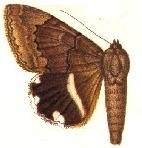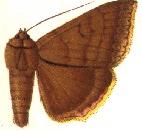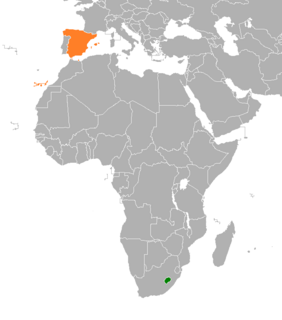
Lesotho, officially the Kingdom of Lesotho, is an enclaved country within the border of South Africa. It is by far the largest of the world's three independent states completely surrounded by the territory of another country, with Vatican City and San Marino being the other two. Additionally, it is the only such state outside the Italian peninsula, and the only one that is not a microstate. Lesotho is just over 30,000 km2 (11,583 sq mi) and has a population of around 2 million. Its capital and largest city is Maseru. The official languages are Sesotho and English.

The economy of Lesotho is based on agriculture, livestock, manufacturing, mining, and depends heavily on inflows of workers’ remittances and receipts from the Southern African Customs Union (SACU). Lesotho is geographically surrounded by South Africa and is economically integrated with it as well. The majority of households subsist on farming. The formal sector employment consist of mainly the female workers in the apparel sector, the male migrant labor, primarily miners in South Africa for 3 to 9 months and employment in the Government of Lesotho (GOL). The western lowlands form the main agricultural zone. Almost 50% of the population earn income through informal crop cultivation or animal husbandry with nearly two-thirds of the country's income coming from the agricultural sector. About 70% of the population lives in rural areas and works in agriculture.

Maseru is the capital and largest city of Lesotho. It is also the capital of the Maseru District. Located on the Caledon River, Maseru lies directly on the Lesotho-South Africa border. Maseru had a population of 330,760 in the 2016 census. The city was established as a police camp and assigned as the capital after the country became a British protectorate in 1869. When the country achieved independence in 1966, Maseru retained its status as capital. The name of the city is a Sesotho word meaning "red sandstones".

The Orange River is a river in Southern Africa. It is the longest river within the borders of South Africa and the Orange River Basin extends extensively from Lesotho into South Africa and Namibia to the north. It rises in the Drakensberg mountains in Lesotho, flowing westwards through South Africa to the Atlantic Ocean. The river forms part of the international borders between South Africa and Lesotho and between South Africa and Namibia, as well as several provincial borders within South Africa. Except for Upington, it does not pass through any major cities. The Orange River plays an important role in the South African economy by providing water for irrigation and hydroelectric power. The river was named the Orange River in honour of the Dutch ruling family, the House of Orange, by the Dutch explorer Robert Jacob Gordon. Other names include simply the word for river, in Khoekhoegowab orthography written as !Garib, which is rendered in Afrikaans as Gariep River with the intrusion of a velar fricative in place of the alveolar click, Groote River or Senqu River, derived from ǂNū "Black".
The Southern African Development Community intervention in Lesotho, codenamed Operation Boleas, was a military invasion launched by the Southern African Development Community (SADC), and led by South Africa through its South African National Defence Force into Lesotho to quell a coup d'état.
The Communist Party of Lesotho is a communist party in Lesotho, founded on May 5, 1962. The founding secretary of the party was John Motloheloa. Other early leaders of the party included Mokhafisi Kena and Sefali Malefane. Edward Mofutsanyana was a member of the Communist Party of South Africa Central Committee but had no part in the Lesotho party. Joe Matthews of the South African Communist Party financed the launch of the Lesotho party but later supported the ANC-allied Marematlou Freedom Party. The South African Communist Party, the Hungarian Socialist Workers Party and Walter Ulbricht of the Socialist Unity Party of Germany sent greetings on the occasion of the founding of the party. The party began publishing Mosebetsi.

Achaea catella, the banded achaea, is a moth of the family Erebidae. The species was first described by Achille Guenée in 1852. It is found in Africa, including Senegal, South Africa, Réunion and Namibia.

Achaea sordida is a species of moth of the family Erebidae first described by Francis Walker in 1865. It is found in Africa, including South Africa and Eswatini.

Acrapex carnea is a species of moth of the family Noctuidae first described by George Hampson in 1905. It is found in Africa, including South Africa.

Ctenoplusia limbirena, the Scar Bank gem, or silver U-tail, is a moth of the family Noctuidae. It is found in south-western Europe, Africa, the Canary Islands, Arabia, the southern Himalayas, India, Sri Lanka, Indochina to south-eastern China, Taiwan, Sulawesi, Bali and Timor. In New Zealand, it has been established since 2011.

Heliothis scutuligera is a species of moth of the family Noctuidae first described by Achille Guenée in 1852. It is found in the Western, Eastern and Northern Cape of South Africa, Lesotho KwaZulu-Natal, Transvaal, Botswana, Zimbabwe and Malawi.
Heliothis galatheae is a species of moth of the family Noctuidae first described by Hans Daniel Johan Wallengren in 1856. It is found all over Africa, including South Africa to Ethiopia and the Gambia.
Acrapex lepta is a moth of the family Noctuidae first described by Martin Krüger in 2005. It is endemic to Lesotho.
Agrotis caffer is a moth of the family Noctuidae first described by George Hampson in 1903. It is endemic to Lesotho and South Africa.

Agrotis longidentifera, the brown cutworm, is a moth of the family Noctuidae described by George Hampson in 1903. It is found in eastern and southern Africa and several islands in the Indian Ocean.
Heliothis disticta is a species of moth of the family Noctuidae first described by George Hampson in 1902. It is found in Lesotho, Transvaal and Zimbabwe.
Heliocheilus stigmatia is a species of moth of the family Noctuidae. It is found in Lesotho, the Eastern Cape, KwaZulu-Natal, Transvaal, Zimbabwe, Botswana and Namibia.

Lesotho–Russia relations are the bilateral relations between Russia and Lesotho.

Lesotho–Spain relations are the bilateral and diplomatic relations between these two countries. Lesotho does not have an embassy in Spain, but its embassy in London is accredited to Spain, He also has a consulate in Madrid. Spain does not have an embassy in Lesotho but its embassy in Pretoria, South Africa, is accredited for Lesotho, but has a consulate in Maseru.
The COVID-19 pandemic in Lesotho is part of the ongoing worldwide pandemic of coronavirus disease 2019 caused by severe acute respiratory syndrome coronavirus 2. The virus was confirmed to have reached Lesotho on 13 May 2020.






